CptCurl
|
| (.450 member) |
| 01/07/08 10:32 PM |

|
|
|
Dale,
You have enriched our forum with your posts of German double rifles.
This rifle in particular is very dear to my heart. As you mentioned earlier, I had the honor of owning this rifle for quite a few years. In fact, this was the first double rifle I ever owned. I acquired it in 1982, I believe. And like so many gun nuts, I traded it several years ago in a transaction to acquire another double rifle. Seeing your photos makes me regret parting with this lovely rifle.
Let me mention several features of this rifle that stand out in my mind. First, the barrels are chopper lump construction, less often seen on German guns. In this photo you can see the line of the barrel assembly passing through the rear lump:
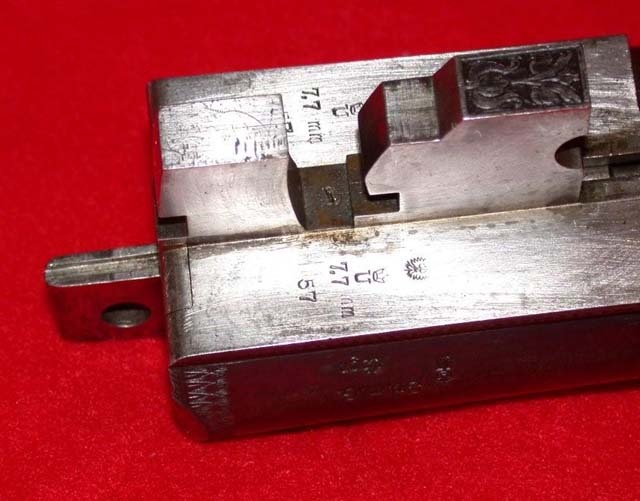
Next, the horn trigger guard is perhaps the best I have ever seen. The horn is highly figured, and the tang of the trigger guard extends to the steel grip cap. In these photos you can see the yellow coloration and patterns in the horn along the extended tang. Just beautiful. What can't be seen, and is stunning to see in person, is the translucent property of the horn guard if it is held to the light. When held to the light, this trigger guard absolutely glows, and the intricate figure of the horn is readily apparent. Look once again at the figure in the trigger guard:
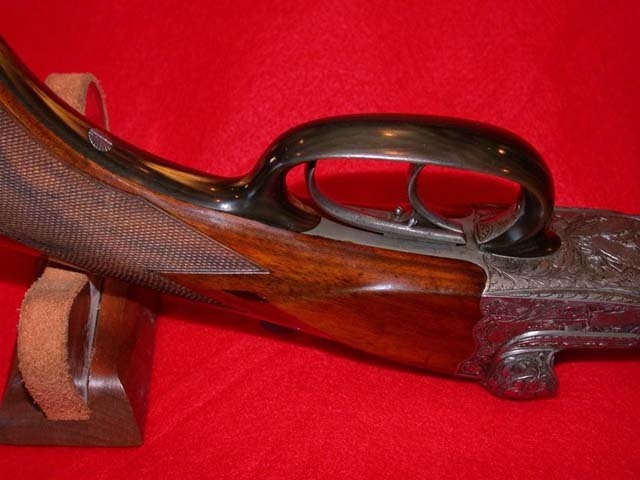
The engraving is quite well done. It would be hard to find a German gun with better engraving. Bob Jones, an expert on German Guns in his own right, made the comment to me that one rarely sees the hooves or feet of animals set out in game scenes; and that usually if they are depicted, they are poorly done. He was quite impressed with the detailed feet and hooves shown in this engraving.


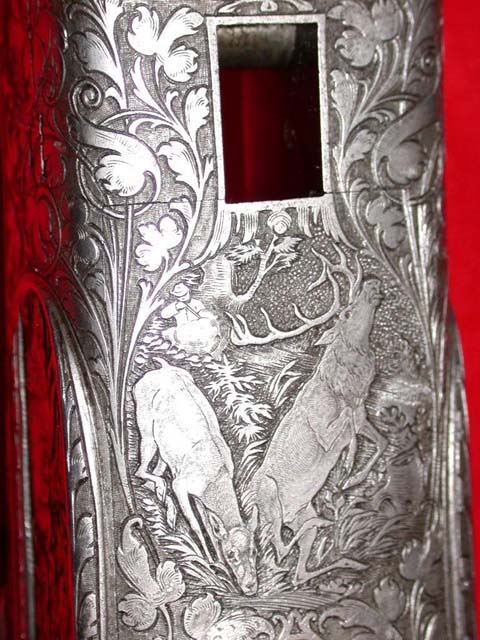
Poorly executed gamescenes are often referred to as cartoon animals, barnyard scenes, etc. Nobody would use those expressions in regard to these scenes. The detail of the hair on these animals is so fine it rivals bulino. The German shorthair and boar look like they will spring alive off the right side of the action.
The wood is much better than usually found on German guns. It is about as fine a piece of marblecake Circassian walnut as can be found. When I got the rifle the finish was almost black from the years. I was wise enough to have a highly skilled stockmaker restore the wood to its original splendor that you see here. This was a restoration clearly merited.
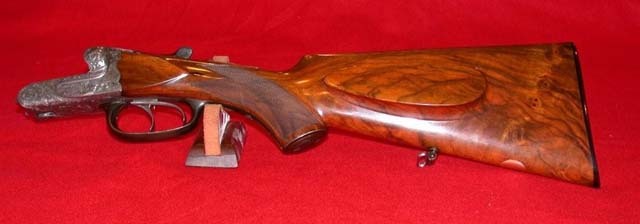


Details of the woodwork include horn diamonds inlet in the pistol grip and a beautiful horn wedge inlet in the tip of the forend.
There is no date stamp, as so often found on German guns. The proof marks clearly date the rifle to the period between 1912 and 1939. It is proofed under the rules of 1912.
The rifle came to me with claw bases installed on the barrels but without its scope, as is the case with so many German guns that became war booty. I would say the original scope was the petite Zeiss Zielklien, which was mounted into bases so terribly close together. I had the little 4x Burris mounted to the original claw bases after much study. At the time this was the only scope on the market that could be mounted in such tight quarters. The rings were done by Gary Wakkenin of Waunakee, Wisconsin.

Frauenstorfer was a retail emporium, and the mark is not uncommon on German guns. The parentage of this rifle is unmistakably Gebruder Merkel. I asked Dale to post a photo of the face of the breech on which is stamped the Gebruder Merkel logo. The mark is a "G" superimposed over an "M" and set within a shield. You can see it in this photo:

The same maker's mark is seen in this image of the Merkel masthead:
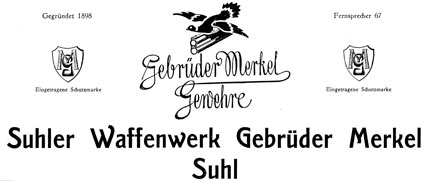
Dale, I congratulate you on owning this fine rifle, and I hope it brings you the pleasure it brought me.
Curl